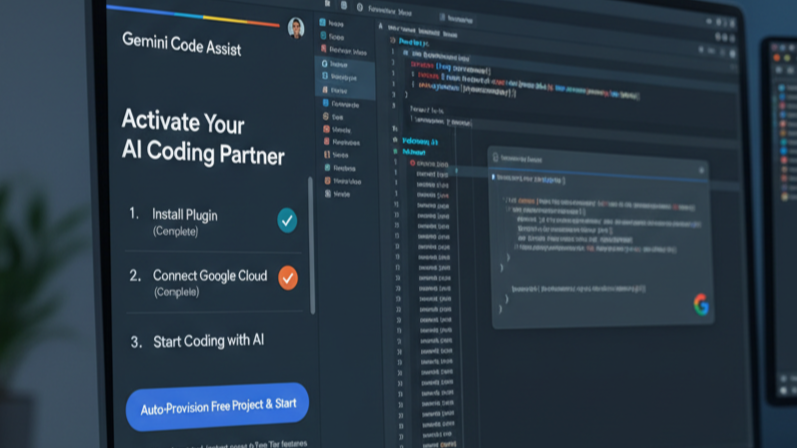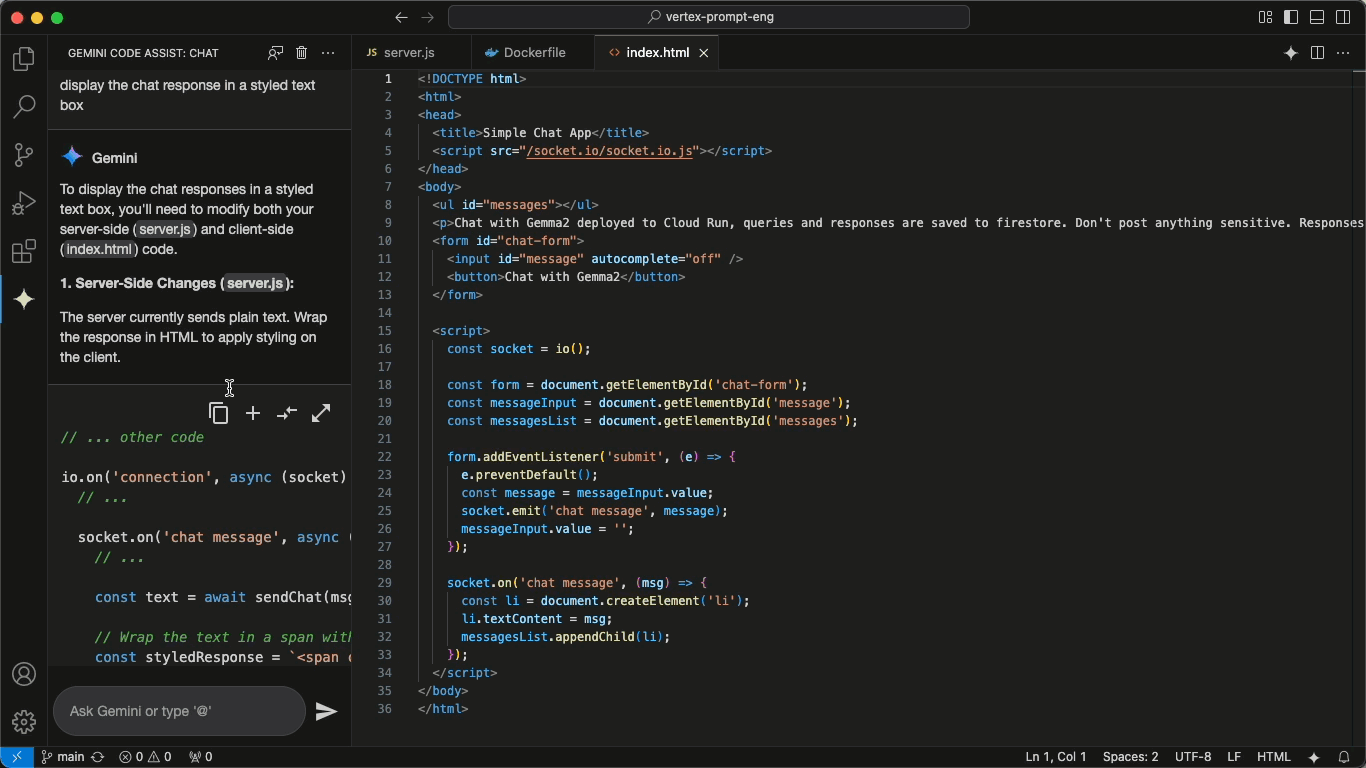Driving activation for Gemini Code Assist through onboarding redesign
Challenge
Converting high intent (plugin install) into successful, first-time product value by overhauling a high-friction onboarding flow across multiple 3rd-Party IDEs
Context
Gemini Code Assist, a strategic Google Cloud offering, faced the critical challenge of converting initial interest (plugin installation) into sustained value. The high-friction onboarding experience was hindering adoption for the new product.
Strategic Importance & Leadership Scope:
As Lead UXR, I owned the research strategy for this initiative—a flagship project that directly reported to the Product Leadership team. The research findings informed not only the immediate redesign but also shaped the broader developer onboarding principles used across multiple Google Cloud products. This engagement required stakeholder alignment across Engineering, Product Management, Design, Legal (data privacy), and Go-To-Market teams, positioning the research as a strategic asset for the free-tier launch.
Impact
Directed the onboarding redesign, which converted a 40% mid-funnel drop-off into a 20% increase in developer activation (installation to first usage)
Established the core experience model for Gemini Code Assist's Free Tier, achieving a 15% lift in first-prompt satisfaction. T
Provided the critical insight that led to the Automated Provisioning solution, which removed 5+ manual steps (Project/Billing setup). This strategic pivot mitigated technical friction and drove a 120% increase in CSAT/user sentiment for the Free-Tier flow.
Difficulty
The Activation Gap: We observed a critical 40% drop-off rate at the mid-funnel, where a multi-step journey between installation and first usage created an unacceptable level of friction and developer overwhelm.
Contextual Disconnect: The developer journey forced a jarring context switch: moving from a familiar 3rd-Party (3P) IDE to the unfamiliar, high-friction Google Cloud environment, which required developers to manually navigate concepts like "Project" and "Billing Account."
Dual Constraints: We had to achieve a streamlined UX despite the technical constraints of working within 3P UX elements (for transparency and sign-in). Ensure users were quickly transferred to Google ecosystem as they were granted access to the free tier while simultaneously ensuring a once they were. So we had to balance between high-quality developer experience and a strategic "sell force" .
Methodology
As the Lead UXR, I personally owned and architected the end-to-end research strategy for this critical activation problem, driving integration of user needs directly into the core workflow design.
Foundational Discovery & Diagnostic:
Initiated the project with a Heuristic Evaluation of the existing flow to systematically diagnose usability issues against established developer UX principles. Discovering developers could easily install the plugin, the journey from installation to meaningful value creation required navigating multiple unfamiliar steps—averaging 8+ clicks and 3+ context switches.
Partnered with a Data Analyst and PM to pinpoint the exact steps where users were abandoning the onboarding process (the high-friction zones).
Phased, Iterative Research Program:
Executed a mixed method study across both the 3P IDE and Google Cloud environments:
Phase I (Deep Dive): I conducted 12+ in-depth external interviews with new developers, leveraging high-fidelity mockups to map their motivations, mental models, and initial expectations of a seamless setup with new developers across varying expertise levels and IDE preferences (VS Code, JetBrains, Visual Studio).
Phase II (Synthesis & Verification): I led the Affinity Mapping effort to distill qualitative pain points into validated design principles. This was followed by 20+ live product Remote Interviews to diagnose the root causes of confusion around core Google Cloud concepts.
Phase III (Validation & Launch): Tested the new, redesigned flows with beta-test groups of allow-listed 3P customers under NDA to validate assumptions and achieve high confidence before development.
Ethical UX Foundation: Implemented a rigorous consent framework ensuring 100% explicit opt-in for user research data collection, setting a precedent for Google Cloud developer research practices
Impact & Outcomes
The UXR-led strategy successfully addressed the activation barrier, driving significant user growth, efficiency, and a foundational model for future developer experiences. Team invested in free-tier and paid-tier experience to communicate the value proposition of Gemini Code Assist.
Data indicated that users who churn experience higher rates of errors and technical issues which prioritized infrastructure capacity strain for engineering teams.
Activation & Sentiment:
Delivered a 20% increase in developer activation (installation to first use) by implementing progressive disclosure and a streamlined UI. This directly translated to a significant increase in active monthly users.
Redesigned Free-Tier flows drove a 120% increase in CSAT/user sentiment, validating the new mental model.
Strategic Feature Launch: My research directly defined the feature set and flow for the Gemini Code Assist Free Tier, enabling Google to launch a value-first experience (180k code completions/month) that resulted in a massive increase in overall product adoption.
High-Impact Clicks: Increased the rate of first-prompt satisfaction by 15%, a key proxy for successful feature discovery and product stickiness.
Sustained User Success: Designed and informed the UI elements that clearly communicate the user's current tier(paid/free) and capabilities, setting accurate expectations and managing the post-onboarding experience.
Overall UXR highlighted the need of assistance everywhere, answering contextual responses and the need to assist with the common product usage than generic assistance.
Solution
Automated Provisioning and Progressive Disclosure
1. Automated Provisioning: Automatically provision qualified developers with an auto-generated Google Cloud Project (GCP). This removed 5+ manual steps associated with unfamiliar "billing" and "project" concepts.
2. Progressive Disclosure: Restructuring the flow to introduce paid-tier and complex concepts only after the user experienced initial value from the free tier.



